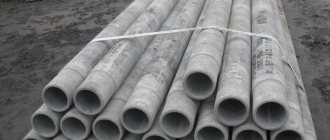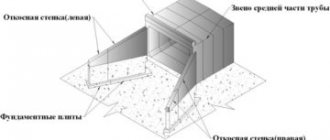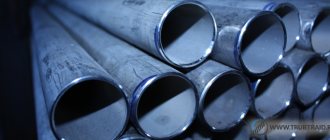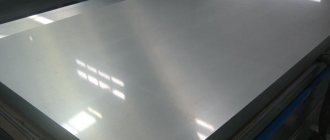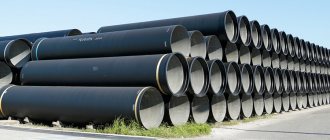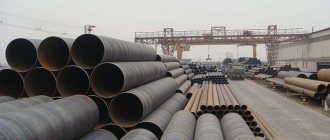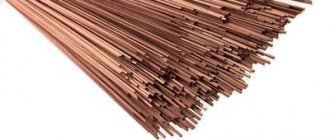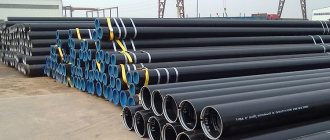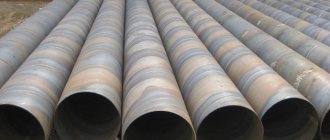Even professional installers of various communication networks have rarely encountered such a material name as PPRC pipes (Poly Propylene Random Copolymer), although they have to work with it very often. The reason for this ignorance is the manufacturer’s usual desire to simplify the product name as much as possible and make it readable. So what is hidden behind this abbreviation?
What are pipes made of?
The hero of our article
Let's first remember what materials are used in principle to create plumbing and heating systems.
- Black steel pipe . A nightmare of the last century, tedious to assemble and prone to corrosion. In addition, in cold water it overgrows over time, reducing permeability. Fortunately, it is used less and less.
- Galvanized steel pipe . Does not rust, practically does not overgrow over time. The only downside that can be mentioned is the labor-intensive installation.
- Copper . Almost eternal pipes, but with labor-intensive installation of copper pipes using soldering and the cost of a small African state.
Despite all the shortcomings, copper pipes and fittings look very impressive
- Metal-polymer pipes . Easy assembly, decent appearance, smooth inner surface. Among the disadvantages, we can mention only limited resistance to temperature (up to 95 C) and the fact that pipes often leak at the fittings after several dozen heating and cooling cycles.
- Polyethylene . Easy installation using compression or weld fittings, extremely flexible... However, limited temperature resistance. Polyethylene has an operating temperature of only up to 40 degrees.
Important: cross-linked polyethylene stands apart.
The molecules of this polymer have not only sequential, but also lateral bonds; as a result, the resulting material has a much higher melting and deformation temperature.
Pipes made from it can withstand even hot boiling water.
Cross-linked polyethylene has noticeably different physical properties from regular polyethylene.
- Finally, polypropylene, or PPR pipes . They are connected by low-temperature soldering, have a long service life at a low price; The main disadvantage is the high elongation when heated. However, reinforcing pipes with aluminum or fiberglass solves this problem completely.
The list is complete. As you can see, there are no PPRC pipes in it. What kind of animal is this?
We analyze the best qualities of the product
There are several features that distinguish them favorably from other pipe rolling products. These include:
- Good sound insulation;
- Corrosion resistance;
- Resistance to aggressive substances;
- No internal deposits;
- High strength;
- Resistance to repeated bending.
In addition, the pipes do not lose their original shape as a result of temperature changes. They can be operated at different temperature conditions. Good elasticity saves pipes from destruction when water freezes inside them. The material is non-toxic, so the pipes are completely environmentally safe.
Manufacturers install a long warranty period on their products: in water supply systems up to 50 years, in heating systems - 30 years.
Let's investigate
Chemists know three modifications of polypropylene.
If you arrange them according to the time of creation, then these are:
- Propylene homopolymer PPH;
- PPB block copolymer;
- Static copolymer of propylene and ethylene. Poly Propylene Random Copolymer. P.P.R.C.
That's the news! And where, in fact, is the PPR pipe we are used to? What is it made of?
Everything is extremely simple. PPR pipes are made from the same PolyPropyleneRandomCopolymer. It’s just that in the process of market formation, branding of material and pipes, the established abbreviation decreased by one letter y.
The market generally gravitates towards short names and abbreviations. Few people remember that aspirin is correctly called acetylsalicylic acid.
Please note: you can often find another product of free word formation - PPRS pipes.
Apparently the latter is short for the wrong copolymer. Or maybe this is a reverse transliteration of the Russian-language PPRS... One way or another, it’s still the same polypropylene.
Before us is an old friend
Types of fittings
A fitting is a connecting element for ppr pipes. Some have a threaded bronze insert (MRN or MRV). connecting elements are used for arranging the water supply system
- Clutch. This is a hollow barrel, which is intended for welding pipes of the same diameter.
- Adapter. This is also a coupling, but has a different cross-section on each side. Used for welding pipes of different diameters. The adapter may also have a metal insert with threads for connection to steel pipes or other wiring elements.
- Corner. It is necessary to turn the pipeline.
- Tees or crosses. Needed to connect several pipes. Can be threaded.
- Water hammer compensators. They are sold as finished products, but you can also make them yourself.
- Coupling with union nut (American). It is used in places where it is necessary to dismantle any section of the wiring from time to time (for example, when installing water meters).
In addition to fittings, plugs, fasteners, etc. are often needed. It is also advisable to use shut-off valves at each connection of water points.
Hello again!
Since we have an old acquaintance in front of us, we can tell a lot of interesting things about him.
Physical and chemical properties of the material
- This is the least dense of all plastics . The density of polypropylene is only 0.91 g/cm3 - less than that of water.
- Elongation at break, depending on the grade of polypropylene, ranges from 200 to 800 percent . Therefore, pipes made of this material will be very plastic.
- The material is very resistant to abrasion . Suspensions contained in water will cause minimal harm to polypropylene pipes.
- Polypropylene is chemically resistant . Alkalis and acid solutions can damage it only with prolonged exposure in combination with high temperatures.
- At -5 - -15 C polypropylene becomes brittle . Therefore, ice plugs in the pipes are dangerous for them.
- At 160-175 C polypropylene melts, at 140 it begins to soften.
This is what granulated polypropylene looks like
Please note: polypropylene pipes from major manufacturers claim a much lower operating temperature.
Usually it is 90-95 degrees. However, for reinforced polypropylene, short-term excesses are provided for.
Reinforcement
From the point of view of the presence or absence of a reinforcing layer, the following types of polypropylene pipes are distinguished:
- Unreinforced . They can be used for both cold and hot water (however, the PPRC PN10 pipe is intended exclusively for cold water supply); on hot water, elongation when heating these pipes requires the use of compensators - U-shaped or loop-shaped bends of the pipe.
- Reinforced with aluminum foil . The aluminum layer is connected to polypropylene with glue; it can be located either outside the pipe or between two layers of polypropylene (the so-called PPR - AL - PPR pipe).
The photo clearly shows the structure of such a pipe
- Fiberglass reinforced . Unlike aluminum, here the reinforcing layer is not foreign to the pipe and cannot peel off. It is a mix of the same polypropylene and microfiber - miniature fiberglass fibers.
Pressure
The working pressure of the pipe is indicated in its marking. For example, a PPRC PN20 pipe is a pipe designed for a pressure of 20 kgf/cm2.
Please note: the operating pressure is indicated at a water temperature of 20 degrees, that is, cold. At a temperature of 90 C, a PN25 pipe must withstand only 10 kgf/cm2.
The PPR PN10 pipe stands apart. As already mentioned, it is intended exclusively for cold water at pressures up to 10 kgf/cm2.
Despite the positioning only for cold water, the maximum temperature for this pipe is 95 C
Diameter selection
In general, to select the diameter of a pipe, hydraulic calculations are used, which take into account the material of the pipe, its age, its length, the number of bends, and a bunch of other factors.
In practice, in the vast majority of cases, the reality is as follows:
- PPRC pipe 20 mm is used for distributing cold and hot water;
- 25 mm pipes are used for heating distribution in private houses, heating risers and connections to heating devices in apartment buildings;
- A pipe with a diameter of 32 - 40 millimeters is used as water supply risers;
- Pipes measuring 40 - 50 millimeters are used for distributing water supply from the elevator and water metering units to the risers of apartment buildings.
These sizes are sufficient for any reasonable number of plumbing and heating fixtures.
These are the pipes taken here
Pipe connection
Polypropylene pipes are connected using a low-temperature soldering iron.
The algorithm of actions is as follows:
- On a soldering iron with manual temperature control, the temperature is set to 260-280 degrees;
- In the case of a reinforced polypropylene pipe, it is cleaned with a shaver in the case of external reinforcement with aluminum or a trimmer in the case of an internal reinforcing layer;
Please note: fiberglass reinforced pipes do not require stripping.
- The pipe and fitting are briefly aligned with the two sides of a soldering iron nozzle of the appropriate diameter;
- Then the pipe, melted on the outside, is inserted without turning into the fitting melted on the inside;
- Hold the pipe and fitting motionless for 15 seconds.
You can move on to the next connection.
All the tools needed to create a plumbing fit in a small suitcase
Connection Features
Connections can be made end-to-end, using electrical fittings and semi-frictionally (socket connection). To connect polypropylene systems to metal elements, fittings with bronze pressed threads are used. Such joints are often sealed using Teflon tape.
Basic recommendations for installing polypropylene wiring:
- Before starting installation, it is necessary to very carefully inspect all material for damage and contamination (dirt can ruin the solder joint).
- It is recommended to carry out all work only at above-zero temperatures.
- The bending radius varies depending on the diameter of the pipes.
- When fastening to walls, the thermal expansion of materials must be taken into account. During strong heating, polypropylene gradually deforms, so moving and fixed points should be taken into account.
A vent must be provided for the heating system. It is installed at the lowest point. The minimum slope for complete coolant discharge should be 0.5%.

